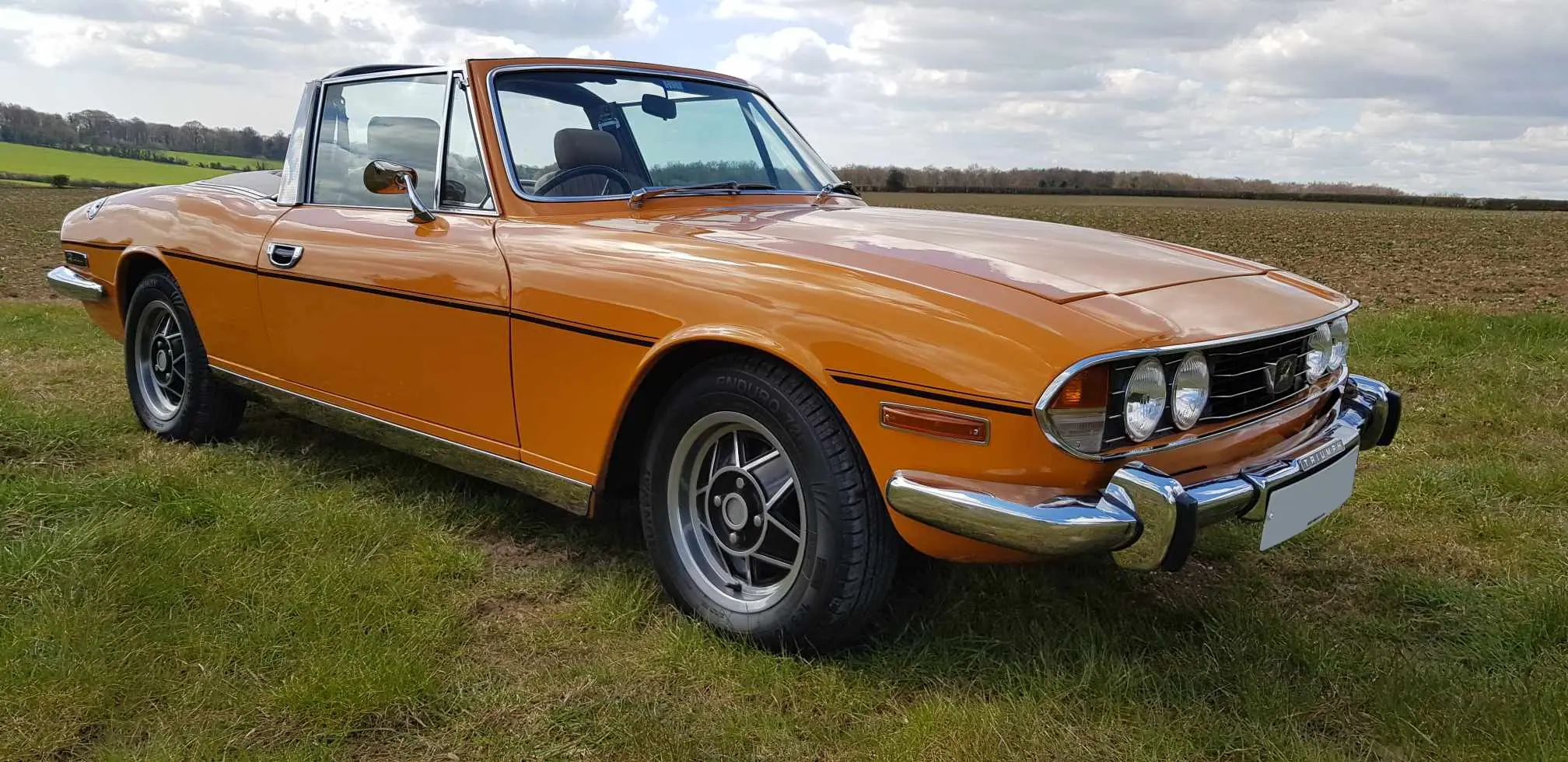Meet The Owner – Carl Pearce and his Triumph Stag
13 May 2024
There are mixed reactions to my Triumph – you often get told how these cars used to blow up. This is incorrect; they suffered from overheating, which was caused by casting sand that hadn't been properly removed when the engine blocks were made. The sand used to block the radiator, hence the overheating. My Stag is in the colour Topaz, which was only offered in the last two years of production. It is a bit of a marmite colour – you either love it or hate.
Carl Pearce's car remains one of the most fascinating vehicles to wear the Triumph name. Shortly after its debut in 1970, Car compared it with the Reliant Scimitar GTE and decided they were “Two British cars we can all be proud of”. John Bolster of Autosport thought it “a very important addition to the British Leyland range which will bring profit to its makers and pleasure to its owners”.

And in 1970, the Stag appeared set to bestow a new image upon Triumph. At that time, many British motorists regarded its range of sports cars and saloons as the domestic (and less expensive) alternative to Alfa Romeo, BMW or Lancia. But the Stag was a Grand Tourer to appeal to Mercedes-Benz SL owners in the States. In the UK, it cost £2,107 15s 10d – £500 more than a Ford Capri 3000E.
Much of the Stag’s background is well-known: it would use a new 3.0-litre V8 engine derived from the “slant four” unit, which Triumph developed for the Saab 99. Leyland acquired Rover in 1967, but its Buick-derived 3.5-litre V8 was ruled out on the grounds of production complications. The corporate rivalry between Rover and Triumph was another probable reason.
Giovanni Michelotti devised the elegant coachwork, which resembled the 2000/2.5 PI Mk. II saloons, although it is said they had just 22 panels in common. The three-week press launch in May 1970, with BL despatching a 12-strong PR fleet to Belgium, was so elaborate there was little money for the Range Rover’s debut shortly afterwards.
British Leyland also arranged for several high-profile screen appearances from Diamonds Are Forever (even if the Stag had an overdubbed Herald 1200 engine note) to Straw Dogs. We should also not forget the Stag’s memorable role in the hilariously awful Dracula A.D. 1972. By 1973, a still impressed Car said it was “a good answer for people who have not quite given up having wind in their toupees”.
But as history relates, the Stag suffered from a myriad of production issues. It never realised its potential in the USA; the last 25,877 examples left the factory in 1977. Today, enthusiasts such as Carl recognise the Stag for its own merits. His first memories of the Triumph:
I remember this car from when I was in my early twenties, back in the early 1990s. We went to a friend's wedding, and the photographer pulled up in a white Stag. After I heard the V8 burble, I was hooked. This Stag is an automatic, and I have owned it for 13 years now.
To quote the sales copy, it really was “A New Kind of Triumph”.
With thanks to: Carl Pearce
